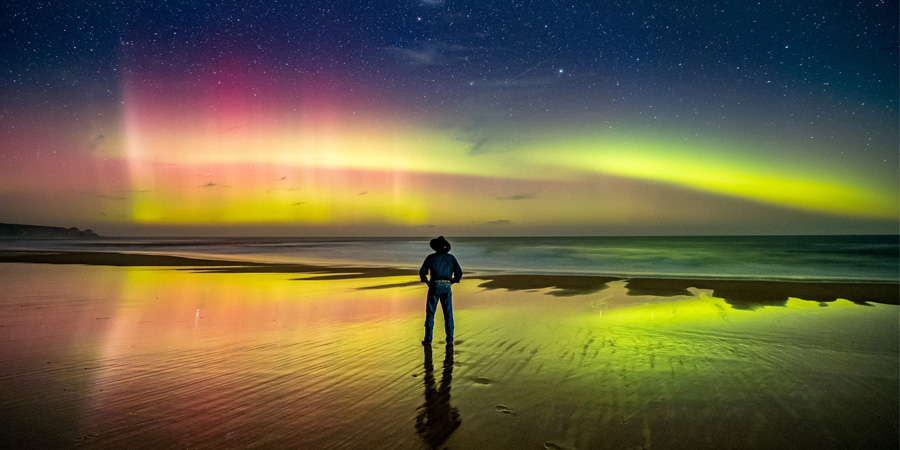Moderate G2 geomagnetic storm
Friday, 20 April 2018 13:04 UTC

The anticipated coronal hole solar wind stream has arrived at our planet and packed quite a punch. Active geomagnetic conditions (Kp4) were expected but the solar wind conditions were so impressive it was enough for us to reach the moderate G2 geomagnetic storm threshold which equals a Kp of 6 and some impressive auroral displays around the globe.
It all started when a shock like structure arrived yesterday at 23:21 UTC at the Sun-Earth L1 point which is where we find the DSCOVR space craft that gives us real time solar wind data.
The solar wind density abruptly increased to about 40/cm3 along with a minor but also abrupt increase in the total strength of the IMF. These are signs you'd normally expect of a shock arrival ahead of a coronal mass ejection but it is fairly safe to conclude this is indeed the coronal hole solar wind stream as the solar wind speed has now increased to around 500km/s. It is rare for a coronal hole solar wind stream to form a shock wave at 1 AU but not unheard of.
The solar wind stream came with some interesting interplanetary magnetic field parameters as well as the north-south direction of the interplanetary magnetic field came very close to -20nT which is impressive for a coronal hole solar wind stream. This combined with the high solar wind density which at times reached close to 60 particles/cm3, sparked moderate G2 geomagnetic storm conditions between 06-09 UTC and 09-12 UTC. Between 03 and 06 UTC we reached minor G1 geomagnetic storm conditions.
The current numbers presented to us by DSCOVR indicate the onset of the fast solar wind stream as the solar wind speed is now increasing to over 500km/s. The IMF parameters remain enhanced with the Bz being erratic between about +10 and -10nT but these numbers aren't as high as we saw earlier this morning. Moderate G2 geomagnetic storm conditions are unlikely in the hours ahead but minor G1 geomagnetic storm conditions remain possible. Be on the lookout if you are at a high latitude location or an upper middle latitude location!
Header image: Aurora Australis captured this night from Phillip Island, Victoria, Australia by Photo Rangers. Check out his work on his Facebook page Photo Rangers and of course check out his website!
Thank you for reading this article! Did you have any trouble with the technical terms used in this article? Our help section is the place to be where you can find in-depth articles, a FAQ and a list with common abbreviations. Still puzzled? Just post on our forum where we will help you the best we can!
Latest news
Latest forum messages
Support SpaceWeatherLive.com!
A lot of people come to SpaceWeatherLive to follow the Sun's activity or if there is aurora to be seen, but with more traffic comes higher server costs. Consider a donation if you enjoy SpaceWeatherLive so we can keep the website online!

Space weather facts
| Last X-flare | 2024/12/08 | X2.2 |
| Last M-flare | 2024/12/24 | M4.1 |
| Last geomagnetic storm | 2024/12/17 | Kp5+ (G1) |
| Spotless days | |
|---|---|
| Last spotless day | 2022/06/08 |
| Monthly mean Sunspot Number | |
|---|---|
| November 2024 | 152.5 -13.9 |
| December 2024 | 110.7 -41.8 |
| Last 30 days | 117.3 -41.4 |


